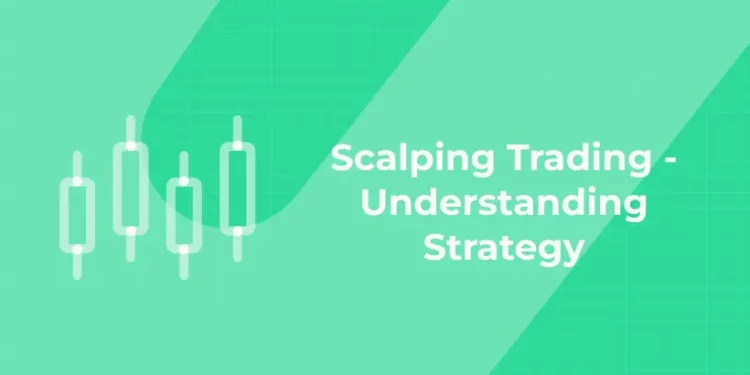Table of Contents
A common trading technique that seeks to make money from minute changes in price in the financial markets is scalping, often known as scalp trading. In order to make money, traders purchase and sell here several times a day. Scalpers aim to capitalize on extremely brief market chances, understanding scalping as a trading method is crucial. By promptly spotting and seizing opportunities for short-term trading that may not be reflected in the day’s broader trend, scalpers aim to optimize their earnings. They are pro at understanding market trends and controlling risks. In this blog, let’s take a closer look and learn more about scalping approach.
Learn about forex trading from the SEBI Compliant Finance Education Platform!
What Is Scalping Trading?
By taking advantage of minor price fluctuations, traders can generate cumulative profits using a technique known as scalping. Trades are made quickly—in a matter of minutes or seconds—by scalpers, or traders that engage in scalp trading. Because a one big loss could wipe out all of the little gains from the previous deals, a scalp trader must have a precise exit strategy. Therefore, discipline, decisiveness, and endurance are necessary for scalp trading. You can succeed as a scalp trader if you possess these traits and the appropriate resources.
The excitement of scalping is typically relished by traders. To be able to discover profitable opportunities in the market, however, you will need to have the experience necessary to implement the many technical trading approaches.
Who Are Scalpers?
1: What is a stock?
According to market supply-demand theory, a scalper is someone who purchases huge amounts of in-demand goods at standard rates in the hopes that they would sell out, such as new electronics or event tickets. After that, the scalper resells the goods for a greater sum. For example, a scalper would purchase ten Super Bowl tickets and try to resell them on eBay a few days prior to kickoff at a premium price. Under some circumstances, this kind of scalping is prohibited, and these deals frequently take place on the black market.
SEBI-Compliant Stock Market Training
Trusted, practical strategies to help you grow with confidence. Enroll now and start investing the right way.
Know moreScalping Trading Strategies
In order to make substantial profits, scalpers usually maintain positions for only a few seconds to a few minutes at a time and rely heavily on volume of trades. The following are a few typical scalping trading strategies:
Commercial Production: By concurrently submitting buy and sell orders at marginally different prices, market makers create liquidity. Making money off of the bid-ask difference is the aim. In order to quickly execute transactions, this technique needs a significant amount of capital and advanced equipment.
Trading based on News: Trading on the basis of economic data or press announcements is another aspect of scalping. Scalpers keep an eye on economic calendars and news feeds in order to respond to big announcements that could spark sudden price swings.
Momentum Scalping: The goal of momentum scalping is to trade assets that have performed well recently. Scalpers seek out assets with substantial price movement and high volume before placing trades to profit from the prevailing momentum.
Technical Evaluation: Technical indicators are used by scalpers while making trading decisions. Among the most widely used signs for scalping are:
- Trends and possible entry and departure locations can be found using moving averages.
- Using Bollinger Bands, one can gauge market volatility and spot overbought and oversold situations.
- Finding the momentum and probable reversal points using the Relative Strength Index (RSI).
- Determine overbought and oversold levels with a stochastic oscillator.
Analyzing Order Flow: Using this method, you can predict short-term price movements by examining the movement of buy and sell orders. To place fast trades, scalpers keep an eye out for large orders, shifts in order book patterns, and other indications of market mood.
Swapping: Using price differences across various exchanges or markets is known as arbitrage. An asset is purchased by a scalper when it is cheap in one market and simultaneously sold when it is too expensive in another. Frequently utilizing automated trading systems, this approach necessitates quick execution.
Range Trading: Finding important levels of support and resistance inside a trading range is the basis of range trading. Scalpers take advantage of the little price fluctuations within the range by making purchases close to the support level and sales close to the resistance level.
Example For Scalping Trading
Scalper Robert comes into and goes out of transactions quickly. He is chastised by regular dealer Saniya for engaging in deals that rarely yield gains. Robert was given the assignment to calculate and compare his wages for a day after she said that he made at least as much as she did.
Trading $500k worth of stocks at a 2% profit margin brought in $10,000 for Saniya. As an alternative, Robert made $10,000 when he sold his asset for $5 million at a 0.2% profit. The latter also made a lot of trades in a single day, generating a lot more money than Saniya did.
Entri’s Forex Trading Course
Learn the forex trading course from the Entri expert team and earn money. You will master principles related to money management, risk management, and FX trading from the experts at Entri App. The daily market analysis and the practical trading support are what will set Entri’s online forex trading courses apart from others. With the Entri App, you may enhance your capital management techniques, generate trading ideas, and understand the subtleties of smart money principles and market information.
CONCLUSION
By making many short-term transactions, a high number of them, and applying a dynamic and disciplined strategy, scalping trading aims to profit from tiny price swings. Quick decisions, stringent risk control, and a thorough comprehension of market dynamics are required for this strategy. Scalping carries a lot of hazards, such as expensive transactions, commotion in the market, and psychological strain, even if it can be quite profitable.
| Achieve Financial Freedom with these courses? | |
| Stock Market Trading Course | |
| Forex Trading Course | |
| Mutual Funds Course |
SEBI-Compliant Stock Market Training
Trusted, practical strategies to help you grow with confidence. Enroll now and start investing the right way.
Know moreFrequently Asked Questions
What markets are suitable for scalping?
In extremely liquid markets like forex, equities, futures, and cryptocurrency, scalping is a popular activity. These markets have the amount of trade and volatility needed for scalping tactics to work.
What are the risks associated with scalping?
The primary hazards encompass elevated transaction expenses (commissions, spreads, and fees), noise in the market producing erroneous signals, swift fluctuations in value resulting in unforeseen losses, and the psychological strain of making snap decisions under duress. It is essential to manage risk effectively, which includes establishing stringent stop-loss levels.
How much capital is required to start scalping?
Depending on the market and the trader’s risk tolerance, different amounts of capital are needed. Although certain brokers permit small-scale scalping, it is imperative to have adequate money to cover possible losses and fulfill margin requirements, particularly when employing leverage.
Can beginners start with scalping?
Significant experience, self-control, and a thorough comprehension of market dynamics are necessary for scalping. Although novices can attempt scalping, it is advised to begin with demo accounts in order to practice and obtain experience prior to investing real money.
Can scalping be combined with other trading strategies?
It is possible to mix scalping with other trading techniques. For instance, a trader may employ swing trading or trend following under calmer market circumstances and utilize scalping strategies at times of extreme market volatility. Strategies for diversification can aid in risk management and market environment adaptation.











